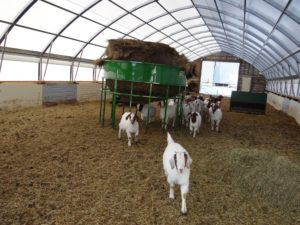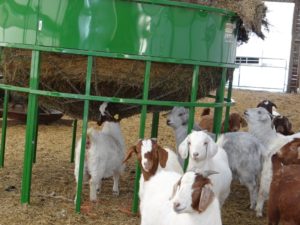Winter Feeding Trials
We are often asked what our sheep and goats eat in the winter. Northwest Wisconsin is a cold and snowy place. Turnips and some types of grasses such as rye and wheat can be grazed throughout the winter if the snow cover is soft and sparse. Grass that is young and growing in the fall will stay green and fresh under snow cover. Once the fields are covered with dense snow and often an ice crust harvested feed needs to be provided. Some years feeding hay will be required as early as November and will last into May. Other years stockpiled pastures of turnips and winter grasses can be utilized much longer by sheep and lambs, often into January and by March they may begin supplementing their diet by browsing in the woods.
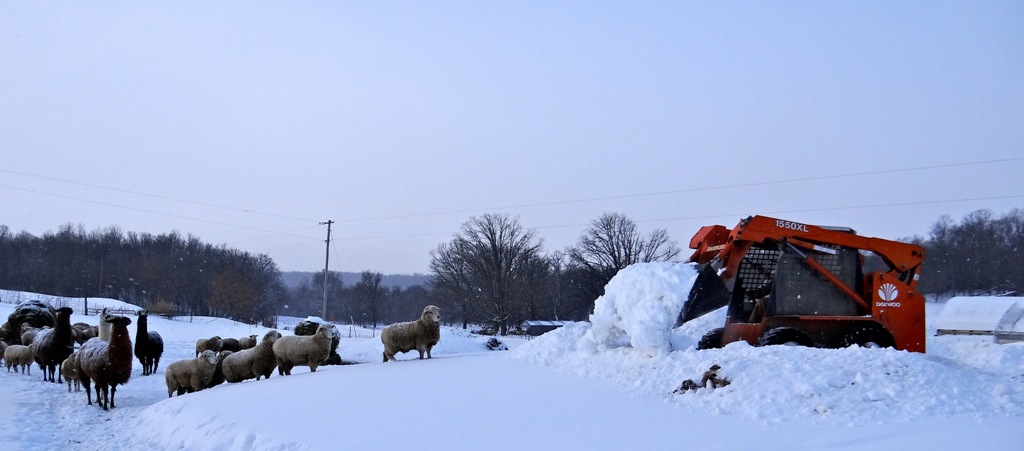
This winter has been particularly difficult due to repeated bouts of heavy snows and many morning temperatures of -35 F. Daytime conditions have brought winds, drifting snow and brutal wind chills. Alfalfa and grass mix hay has been supplemented with alfalfa pellets for some of the younger, growing lambs and kids as they simply could not eat enough during the coldest periods to maintain body fat. Sheep prefer being outside as their wool protects them from dropping temperatures and wind chill. If grazing under the snow is possible they will do so. This is not true for our goats. Although both groups have the option to come and go as they please the goats will run in and out on sunny days but prefer shelter throughout the winter and harvested feed whereas the sheep will shun the buildings and prefer to eat and lounge outside throughout winter.
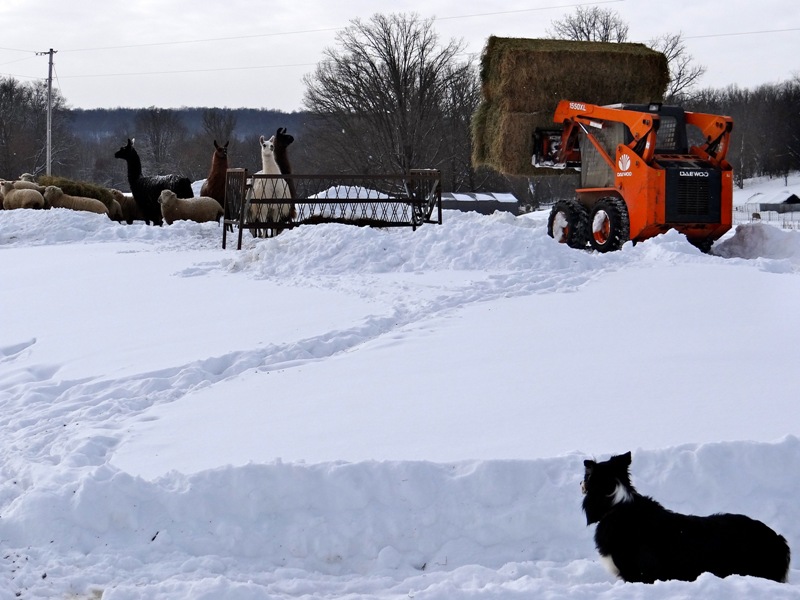
Moving hay in the morning often means first digging out a path. This can take a few hours. The lambs associate the sounds of a digging skidster with the arrival of hay and will wade up to watch eager to be the first one to reach the hay. Although they have a round bale in the background the arrival of new hay is always an event. The hay finally arrives. The 2 square bales will each be deposited into one of the empty feeders. Mist, the border collie, watches just in case help is needed. In the deep snow the llamas and lambs stay on their well trodden paths. They are not interested in escaping out the gate. Just bring in the hay.
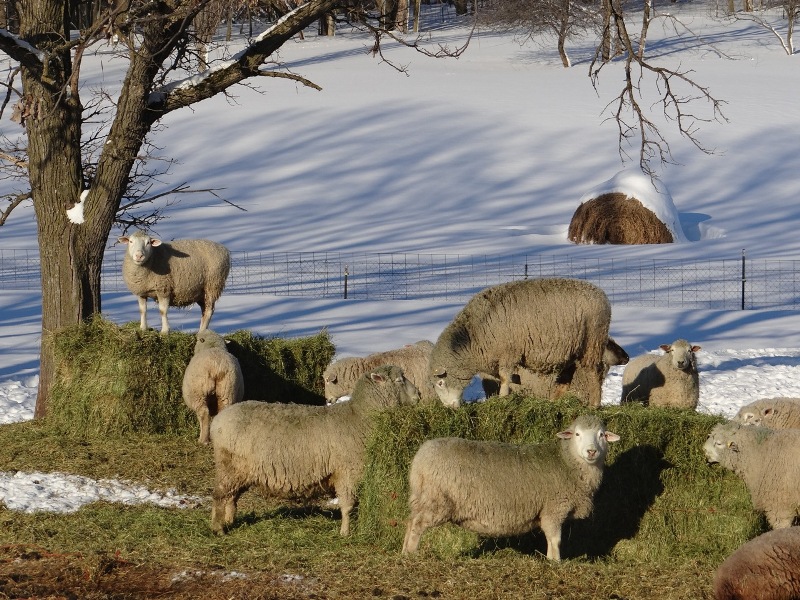
The ewes, in a different field, prefer to eat head down from on top of the bales. This may keep their feet dry and remind them of summer. The bright green color of ewes’ hay reveals its high nutrition as they are a few weeks from lambing. This winter we are trialing several new hay feeder designs to prevent waste (see below). So far, the cradle bale feeder for the ewes is working well. The ring type of feeder designed for cattle is not at all effective for sheep as they climb inside and sleep or get stuck.

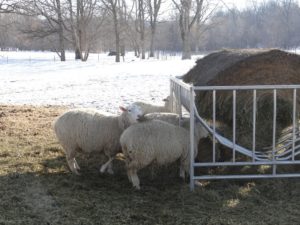
Goats do even a better job of getting stuck, especially ours as we do not dehorn our goats. Horns are great for batting off predators or competitors at the feeder but also great for getting heads locked into odd and tight places.The cradle feeder design that works well for the ewes is a great head trap for the does and kids. We are checking out a different design (see below) for them that prevents stuck heads. The goat kids do wonder why they can’t jump on top and play king of the mountain. They would if they could. Eating with their heads up is the most natural position for goats and this feeder is working well. The ewes did not care for this design and refused to go under the bale to eat. They kept verbally complaining as only frustrated sheep can do until we relented and changed to the silver cradle feeders.
